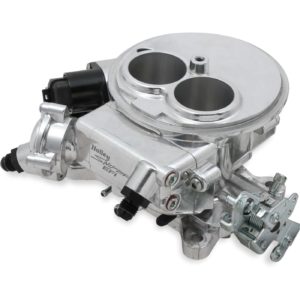A leak in your vehicle’s fuel line could spell a lot of trouble, especially for a fuel injection system.
As the fuel pump sends pressurized fuel through the feed line, a leak in the fuel line can cause problems ranging from fuel smell to poor fuel economy, even to a vehicle fire.

Bad Fuel Injection Line Symptoms
This is why it’s important to watch for the symptoms of a leaky fuel line, which may include the following:
Poor Gas Mileage
One symptom of a leak in your fuel line is poor gas mileage. If the fuel leak is this bad, you should see fuel dripping on the ground.
Car Smells of Fuel
Leaked fuel will always fill the air around the vehicle with the smell of gas.
Visible Leaks
If your fuel line springs a leak while on the road, it can start spraying gas everywhere, leading to puddles along the street and a mess under the hood. Your vehicle will likely also come to a full halt as it loses pressure in its injection system.
Of course, any drops or puddles of gas under your vehicle should immediately be cause for concern. However, smaller leaks are more difficult to spot. You can add fuel-safe dye to your gas tank if you want to make any leaks easier to see.
Inspect the fuel lines carefully for visible symptoms to identify a leak. If you see any damp areas with a buildup of gunk along any of the tubes or hoses, you likely have a bad fuel line on your hands.

Cracks on Fuel Hoses on Older Vehicles
The soft hose parts of your fuel line (if equipped),are more prone to cracking if the material soaks in the gas. Older fuel injection systems like the 4.0L Jeeps from 1987-1990 have rubber fuel hoses feeding the fuel rail. The older the fuel hose, the more likely this will happen. Look over your hoses carefully to make sure they aren’t cracked and leaking.
What Causes a Fuel Line Leak?
Fuel injection first became prevalent in the mid 1980s, and the injectors don’t have a “line” for each injector. The injectors receive their fuel supply from a common rail that is pressurized by a pump in the fuel tank, which usually produces from 40 to 80 psi of fuel pressure, depending on the platform.
Fuel injection first became prevalent in the mid 1980s, and the injectors don’t have a “line” for each injector.
–Richard McCuistian, ASE Certified Master Automobile Technician
That supply fuel line comes from the fuel pump in the tank to the injector fuel rail on both return and returnless systems. There’s also a fuel return line going back to the tank on return systems that have the fuel pressure regulator mounted on the fuel rail.

There are a number of things that can cause a fuel line leak. Different factors affect different parts of the line as well. The rigid parts of the line won’t be subject to all the same problems as the flexible sections, which are made of hard plastic.
For instance, permeation is a large problem for the soft, flexible hose parts of a fuel line. Permeation is what happens when fuel soaks into the hose over time and breaks it down, causing cracks and leaks. Many hoses are also more prone to breaking down due to the ethanol in modern fuel.
Meanwhile, corrosion is something the metal parts of your fuel lines will need to contend with.
Fuel lines as a whole will suffer from age and occasional abrasions. The abrasions can come from other parts of the vehicle rubbing against the lines or debris finding its way into the system. No matter how good your fuel line is, it will eventually break down and need replacing.
How Much Does It Cost To Replace a Bad Fuel Line?
Depending on what section of the fuel line needs replacing, new parts can cost anywhere from $10 to $530. The difference in price often depends on if you need a rigid or a flexible section. Either way, all fuel injection lines are made to withstand the extreme pressure that comes with an injection system.
Maintaining your fuel line is essential for traveling safely in your vehicle. Any leaks in the system can cause a myriad of problems, so stay on top of things and keep an eye out for any of the fuel leak symptoms we’ve discussed.
Any information provided on this Website is for informational purposes only and is not intended to replace consultation with a professional mechanic. The accuracy and timeliness of the information may change from the time of publication.































